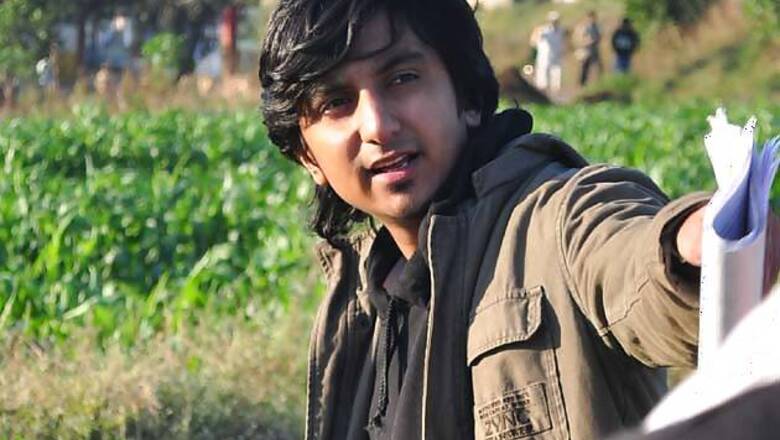
views
New Delhi: FTII student Piyush Thakur has made The Real Millionaire, the only short film from India which will compete at the prestigious 34th Clermont-Ferrand short film festival in France, starting January 27, 2012. The film has won the Best Student Short Fiction award 2011 by the Indian Documentary Producers' Association (IDPA) and will have a screening at MIFF shortly.
The Real Millionaire is the story of a villager whose life is changed after he gets a call from 'Kaun Banega Crorepati'. Piyush talks to DearCinema about his experiences of making the film:
Background:
I am presently in the second year of my three year diploma in Film Editing at FTII. In the first year, every student is supposed to direct and edit a short film shot on Mini DV format. The Real Millionaire is my first work as a director and editor.
I completed my Graduation in Advertising (BMM) in 2009 from Mumbai University and got into FTII in the same year. I wanted to understand Filmmaking through the aesthetics and techniques of Film editing. I love watching films by James Cameron, Sanjay Bhansali, Guru Dutt, Vijay Anand, Hrishikesh Mukherjee, Rajkumar Hirani and Pixar Animation Studios.
Concept of The Real Millionaire:
The film emerged out of brainstorming sessions with my friends. 'Kaun Banega Crorepati' has had a tremendous impact on the Indian television audience including me. It's very disturbing for me to think about people who go back home without making it to the hot seat because they are not fast enough to answer a question. The emotional disturbance and loss of confidence can be more when the game show means everything to you because that's the kind of power the show and superstar Amitabh Bachchan wield in rural areas. These contestants can have an interesting back-story which we decided to focus on in our film.
The screenplay was written in English but we chose to make the film in Marathi because shooting in Maharashtra was the only option available to us.
Finding a location:
Once I got the script approved by the faculty, the next task was to find a village which met the requirements of the script. Our team visited more than 12 villages but failed to find the perfect one. I almost decided to quit this film for the time being because compromising on the mise-en-scène was the last thing on our mind. Then I approached an art direction batch mate who suggested a village called 'Devdi' in Narayanpur in South Pune. We immediately rushed to the village and were surprised to see that it was exactly what we were looking for. We approached the sarpanch of Devdi Village and took necessary permissions for shooting the film. The Sarpanch's representative Kailash Bhate was the back bone of our film production, who passed away in an accident when I was editing the film. The film is dedicated to him. Since it was a student exercise, we were given the camera for 2 days only. The film was completed within forty hours with 190 shots.
Finding Actors:
The actors in the film belong to different Marathi Theatre Groups in Pune. The most difficult part was the casting of Sarpanch, who was the most important character in the film. We tried approaching veteran Marathi actors but everyone turned it down considering it as a student project to be shot on Video. We fixed an appointment with one of the most respected Marathi Theater, Film and Television actors Madhav Abhyankar, who between the break of his play rehearsal listened to our concept and agreed to do it.
Challenges:
The villagers left for the farm early morning at 7 am and were back after 6 pm. It was very difficult to convince them to wait for the shoot. We knew that we had to do it a single take. The climax of the film required a crowd of approx 60 – 80 villagers, which became a challenge. The film team started playing Bollywood numbers on the village loudspeaker which made the villagers come out of their houses. Tea and snacks were arranged for them. Once we had a decent number of villagers, we started shooting immediately. The villagers were explained the shot and expressions required on the loud speaker.
Technical aspects:
I wanted to shoot it on Film format or at least on Full HD, whereas for the college project I only had the option of shooting it on Sony PD 170 on Mini DV Format.
No additional sound devices were to be provided apart from an extension wire and rod, which connects to the PD 170 Camera and records it. So the sound was directly recorded on the camera and that too with only one mic. The Standard Definition look in some sequences contributed in the earthy and simple approach of the film and for that matter I am happy that it was not shot on HD.
Reception:
We screened the film in the village and got a really good response from the villagers. Many of them were not aware of a 'short film' and asked me when I was going to show them the whole 3 hour film. The response was such that no film festival audience in the world can match it. Then the film was screened at Bollywood and Beyond festival, Stuttgart. It's interesting to see how audiences react to the film in different parts of the world, because 'Who wants to be a Millionaire' is an international phenomenon.
Lesson learnt:
This Film was a huge workshop for me, a 24×7 learning process till its final cut.
Managing Human resources and having patience is one of the important aspects when you are part of a film especially, as a director.




















Comments
0 comment